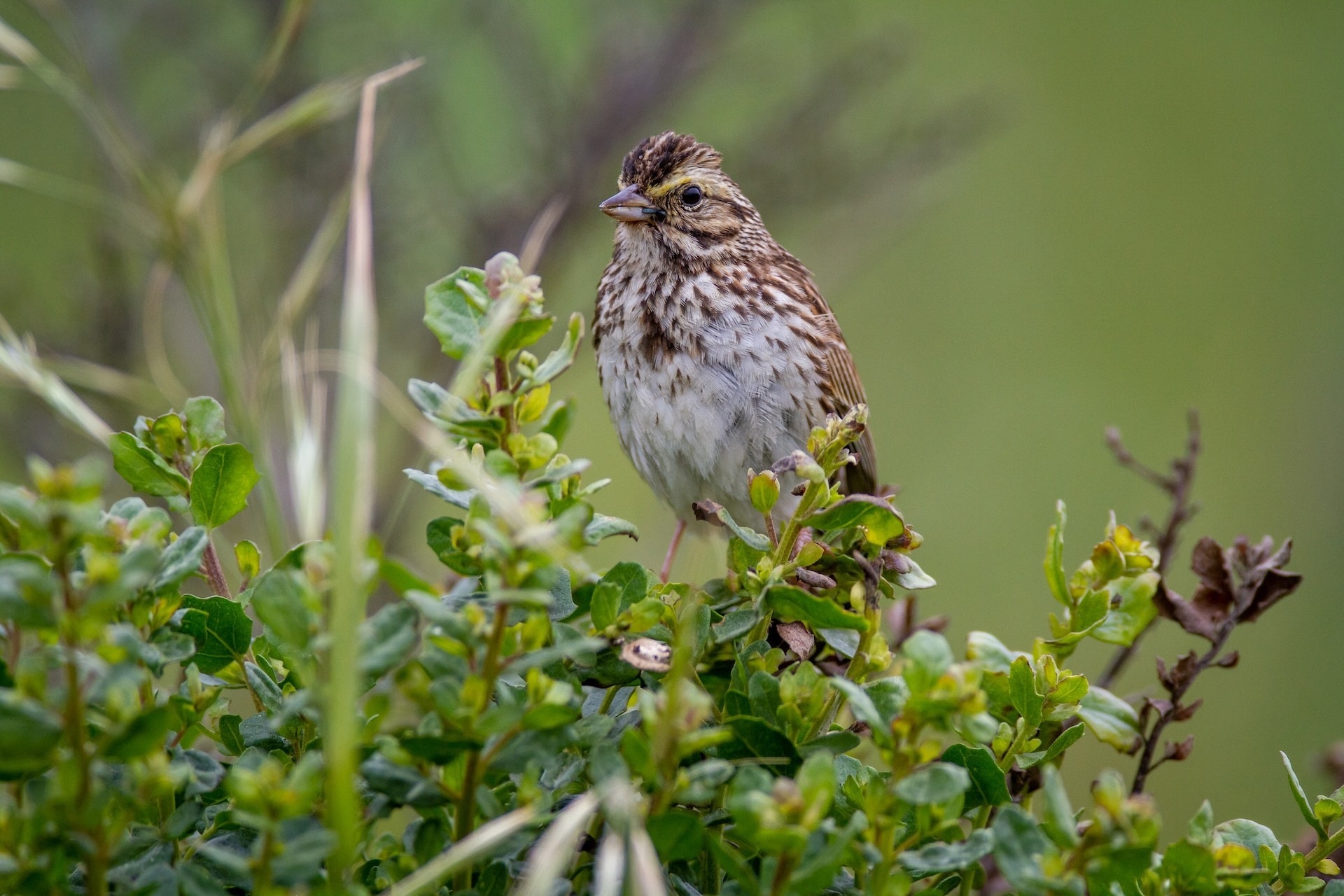Reviewed by Danielle Ellis, B.Sc.Nov 8 2023
Researchers have deciphered the genetic foundation responsible for the striking diversity in body size that is evident among song sparrows, a cherished and widely recognized species of North American songbirds.

Image Credit: Matt Bango/Unsplash.
Additionally, this revelation sheds light on the species’ ability to adapt to the challenges posed by climate change.
The study, which was published on November 7th, 2023 in Nature Communications, successfully identified eight genetic variations, or DNA mutations, that are primarily to blame for the nearly threefold variation in body size seen in song sparrows from Mexico to Alaska. This was accomplished through the use of genomic sequencing.
For example, song sparrows inhabiting the Aleutian Islands year-round can reach sizes up to three times greater than their counterparts residing in the coastal marshes of California.
Katherine Carbeck, the study’s first author and a PhD candidate in the Faculty of Forestry at the University of British Columbia, clarifies that body size exhibits predictable variation in many species dwelling in significantly distinct climatic conditions, aligning with “Bergmann’s rule,” which posits that organisms in cooler climates tend to be larger as an adaptation for thermal regulation.
The existence of ‘locally adapted’ populations implies that natural selection has shaped the genetic makeup of song sparrow populations across their range, enabling individuals to survive and reproduce in drastically different climatic conditions. However, the genetic mechanisms underlying Bergmann’s rule have remained elusive until now.”
Katherine Carbeck, Study First Author and a PhD Candidate, Faculty of Forestry, University of British Columbia
Whole-Genome Sequencing Cracks the Code
Carbeck and her colleagues, hailing from the Cornell Lab of Ornithology, University of Alaska, and Ouachita Baptist University, harnessed the capabilities of whole-genome sequencing to unravel the complete genetic blueprint of the song sparrow and uncover its hidden mysteries.
They meticulously analyzed genetic samples from the two most substantial song sparrow subspecies residing year-round in the Aleutian Islands, along with two smaller subspecies: one that breeds in Alaska but migrates to warmer destinations in the winter, and another that resides year-round on the B.C. coast, where the Pacific Ocean maintains relatively mild winter conditions.
Their comparison of these larger and smaller-bodied subspecies unveiled numerous potential genes linked to body mass. Through the characterization of these candidate genes, they pinpointed eight distinct genetic variations intricately associated with body mass, in harmony with Bergmann’s rule.
Genetic Diversity Helps Life Adapt to Climate Change
The scientists propose that uncovering the genetic foundation of Bergmann’s rule offers insight into the intricate interplay of evolution, natural selection, and climate over the course of a species’ evolutionary history.
Carbeck added, “Our results highlight the potential role habitat conservation plays in enabling the continued exchange of genes between populations — which is important in the face of ongoing change.”
Dr Jen Walsh, a study co-author and research associate at the Cornell Lab of Ornithology, added, “From a genomic perspective, identifying a small number of candidate genes with an apparently large impact on variation in body size is really interesting. The magnificent range of phenotypic diversity seen in song sparrows suggest they offer exciting opportunities to identify genes underlying a host of well-known and generally accepted eco-geographic rules.”
Dr Peter Arcese, a co-author and a professor in UBC’s department of forest and conservation sciences, said the findings suggest a resilient future for these birds.
He concluded, “Our findings imply that some, if not all, locally adapted song sparrow populations may continue to adapt to climate change, as long as we maintain habitat conditions that facilitate the movement of individuals and genes between populations.”
Source:
Journal reference:
Carbeck, K., et al. (2023) Candidate genes under selection in song sparrows co-vary with climate and body mass in support of Bergmann’s Rule. Nature Communications. doi.org/10.1038/s41467-023-42786-2.